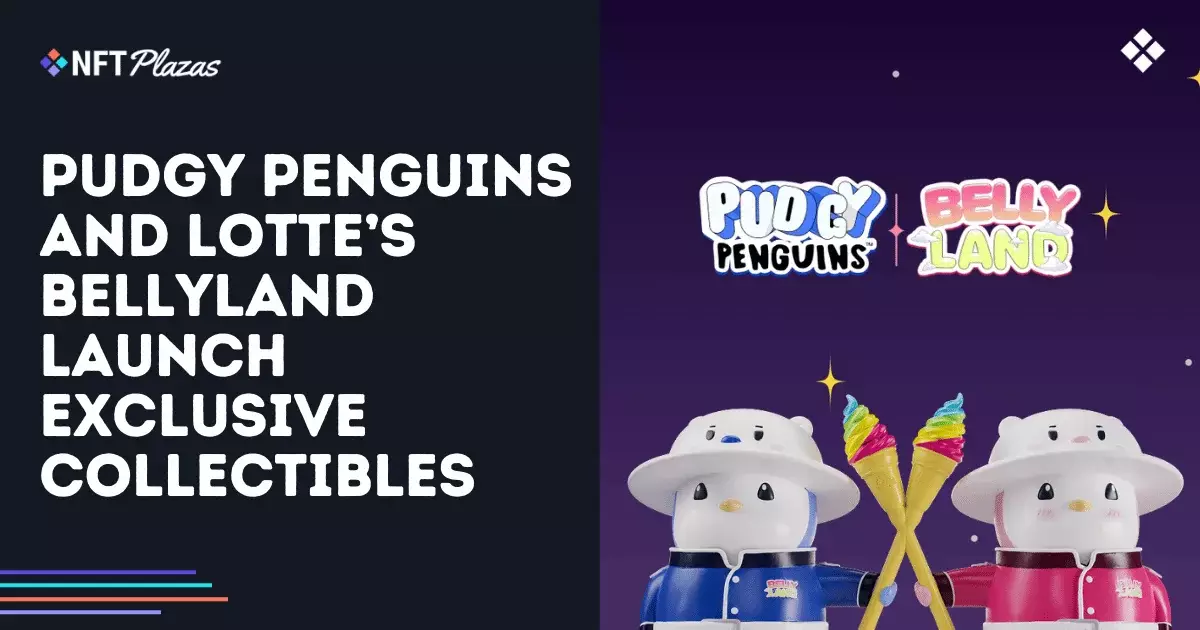The burgeoning realm of non-fungible tokens (NFTs) is no stranger to partnerships that aim to blur the lines between the virtual and physical worlds. However, the recent collaboration between Pudgy Penguins and Lotte Group’s Bellyland stands out as a watershed moment for the NFT industry. This partnership, dubbed “Pudgy in Bellyland,” is not just another collection of digital assets; it represents a dangerous leap towards commercialization that many purists might view as a dilution of the original vision behind NFTs.
What’s especially compelling about this collaboration is its pioneering nature. Pudgy Penguins, a notable player in the NFT scene, is dipping its toes into physical merchandise for the first time in South Korea. The limited release of 500 collectible sets brings along a wave of enthusiasm, especially given the novelty of intertwining tangible goods with digital rewards. However, one must question whether this approach is elevating the essence of collectibles or undermining it by prioritizing profit over artistry.
The Price of Exclusivity
Valued at a hefty $299 per set, these collectibles are positioned as premium offerings, which raises eyebrows about accessibility within the NFT space. The price point places Pudgy Penguins in a precarious position: on one hand, exclusivity drives demand, but on the other, it alienates a significant portion of potential fans and collectors who may not be able to afford the luxury of ownership. This elitism runs counter to the egalitarian ethos that many within the crypto community hold dear.
The bundle comes packed with figurines, themed accessories, and a suite of digital rewards, but is that really enough to justify the steep investment? Digital perks like integrating characters into Bellyland or unlocking exclusive traits in PudgyWorld create an illusion of enhanced value, yet one must ask—are these digital integrations substantive or mere gimmicks designed to boost sales?
Digital Goods: A Double-Edged Sword
The fusion of physical and digital collectibles manifests through RFID chips and QR codes that unlock online experiences. While this can be seen as innovative, it also introduces a level of complexity that may deter less tech-savvy consumers. Are we moving towards a reality where the collector’s joy is overshadowed by the navigation of web3 wallets and digital claims? Such complications could potentially taint the user experience, undermining the straightforward pleasure that comes from collecting tangible items.
Moreover, this collaboration highlights a looming concern within the NFT community: will traditional collectors embrace the necessary shift towards digital ownership? The rise of projects like “Pudgy in Bellyland” suggests a possible downfall of authenticity in favor of lucrative partnerships and mainstream appeal. This trajectory poses the question of what future iterations of the NFT world will even look like.
In an age where digital and physical realms increasingly collide, the Pudgy Penguins partnership serves as both an exciting development and a cautionary tale. The cost of innovation may prove too high for some, and the possible dilution of authenticity could leave long-lasting implications across the NFT landscape. The mixed reactions—excitement intertwined with skepticism—capture the complex emotions that often accompany groundbreaking collaborations in this rapidly evolving space.
















Leave a Reply